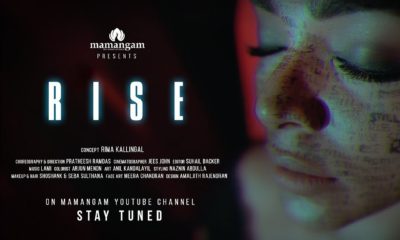Media
Malayalam Actresses Quit AMMA After Dileep Is Taken Back

Rima Kallingal, Remya Nambeeshan, Geethu Mohandas resign from AMMA along with the assaulted actress earlier today, in solidarity with the victim
Text Credits: Sandra James
Taking back actor Dileep into Association of Malayalam Movie Actors (AMMA) has created lot of buzz and debate in the media for the past few days. The decision to take back the Sallaapam actor was made after Monhanlal was appointed as the new president of AMMA. Dileep was accused earlier for his involvement in the kidnap and sexual assault of a well known actress and therefore was expelled from the association.
This decision by AMMA has urged Malaylam actresses and members of the association, Rima Kallingal, Remya Nambeeshan, Geethu Mohandas and the assaulted actress to resign from the association in solidarity with the victim. The above mentioned actresses are also part of Women In Cinema Collective (WCC), an organisation that works to support and protect women in cinema. Other members of WCC – Parvathy, Manju Warrier, and Padmapriya have refrained from quitting AMMA.
However, WCC has given out a statement regarding the news of taking back Dileep into AMMA
They shared the actress’s statement regarding her decision to quit. In her statement she said:
“I am not resigning because he was taken back into the association. Long ago, I had complained against him on the actor being instrumental in taking away the opportunities coming my way in the industry. Even when such a painful episode happened in my life, the organisation that even I am part of, tried to protect him. I don’t feel it makes sense to continue as part of it.”
WCC added to this post the statements by other members of the association who are quitting the association as well:
“AMMA has been a part of the industry since 1995, it hasn’t done anything to make the work space women-friendly in all these years. AMMA even tried to make fun of the initiatives that we undertake towards that aim through its skit,”
Remya responded regarding the matter, “I was shocked to learn from the media the move to take up the issue which was not even in the general body agenda and then follow it up with a decision to reinstate the actor. The body clearly did not think of its member who was a victim of the attack when the decision was being made.” She also added, “few actors have also decided to quit in solidarity with the victim and this may prompt the association to change their decision”.
Fashion
Unveiling the Mystery : The Rise of ‘Quiet Luxury’ – The Viral and Ultra-Expensive Fashion Trend Followed by Billionaires

In the world of fashion, where flamboyance and opulence often take center stage, a new trend has quietly emerged, captivating the attention of celebrities, billionaires, and fashion enthusiasts alike. Known as “Quiet Luxury,” this viral and ultra-expensive fashion trend is causing waves in the industry, challenging the conventional notions of wealth display and style.
While many high-end luxury brands are known for their ostentatious and eye-catching designs, ‘Quiet Luxury’ takes a different approach. It revolves around the concept of dressing in understated, label-less clothing that exudes an aura of sophistication and exclusivity, despite its seemingly ordinary appearance. This trend has gained significant traction over the past few months, with influential figures embracing its allure.
So, what exactly is ‘Quiet Luxury’? At its core, it is a form of subtle wealth display, where the wealthiest individuals meticulously curate their attire with understated tones, simple cuts, and an absence of prominent logos. These seemingly unassuming garments, however, come with exorbitant price tags, often costing a small fortune.

One notable incident that brought ‘Quiet Luxury’ into the spotlight was Gwyneth Paltrow’s appearance in court, clad in an impeccably tailored but discreet pantsuit. This choice perfectly exemplified the essence of ‘Quiet Luxury,’ showcasing the ability to convey elegance and affluence without resorting to overt displays of wealth.
The appeal of ‘Quiet Luxury’ lies in its ability to provide billionaires with a paradoxical blend of ordinariness and exclusivity. By adorning themselves in seemingly commonplace clothing, these individuals are able to blend in with the masses while exuding an air of refinement and extravagance. The garments they choose may appear unassuming to the untrained eye, but their true worth is hidden in the finest craftsmanship, luxurious materials, and meticulous attention to detail.
One prime example of this trend can be found in the wardrobe of Facebook founder Mark Zuckerberg, often seen sporting plain white or grey t-shirts that carry a hefty price tag. Such minimalistic pieces become the epitome of ‘Quiet Luxury,’ encapsulating the allure of hidden opulence within simplicity.
While ‘Quiet Luxury’ is not an entirely novel concept, its popularity has surged in recent times. The trend offers a safe and non-risky approach to fashion, favoring monochrome palettes, classic cuts, and timeless styles that are unlikely to fade away. This makes ‘Quiet Luxury’ an attractive option for those who seek to present themselves as both presentable and affluent, while also ensuring their fashion choices remain perpetually relevant.

In an era where ostentatious displays of wealth often dominate the fashion landscape, ‘Quiet Luxury’ stands as a captivating alternative, enticing the ultra-rich with its subtle allure. By embracing this trend, billionaires and celebrities alike have found a way to project their affluence with grace and sophistication, making a powerful statement without uttering a word.
As the influence of ‘Quiet Luxury’ continues to grow, we can only speculate on how this trend will shape the fashion industry in the coming years. Perhaps it will inspire a broader shift towards understated elegance and timeless style, encouraging individuals to redefine what it truly means to be fashionably wealthy.
Entertainment
The Rise of Mollywood: A Journey Through the Growth of Malayalam Cinema

Malayalam cinema, popularly known as Mollywood, has come a long way since its inception in the early 20th century. Today, it is one of the most vibrant and thriving film industries in India, producing some of the finest films that have been recognized globally for their quality and content.
Pioneers of Malayalam Cinema
The early years of Malayalam cinema were marked by the emergence of pioneers such as J. C. Daniel, who is considered the father of Malayalam cinema. His silent film Vigathakumaran, released in 1928, is considered the first Malayalam film ever made. However, it was not until the 1950s that the industry saw significant growth with the release of films such as Neelakuyil (1954), which went on to win the President’s Gold Medal.
The Golden Era of the 1960s and 1970s
The 1960s and 1970s were a golden era for Malayalam cinema, with the emergence of great filmmakers such as P. Bhaskaran, K. S. Sethumadhavan, and Adoor Gopalakrishnan. These filmmakers, along with talented actors like Prem Nazir, Sathyan, and Madhu, helped to establish Malayalam cinema as a serious player in the Indian film industry.
Innovative Approaches in the 1980s and 1990s
In the 1980s and 1990s, Malayalam cinema saw a new wave of filmmakers who brought a fresh and innovative approach to filmmaking. Directors such as Padmarajan, Bharathan, and I. V. Sasi made films that were realistic, socially relevant, and aesthetically pleasing. Actors like Mammootty and Mohanlal emerged as leading stars and went on to become some of the most respected and popular actors in India.
New and Exciting Talent in the 21st Century
In the 21st century, Malayalam cinema has continued to grow and evolve, with the emergence of new and exciting talent. Directors such as Lijo Jose Pellissery, Dileesh Pothan, and Aashiq Abu have gained international recognition for their bold and unconventional films. Actors like Fahadh Faasil, Nivin Pauly, and Parvathy Thiruvothu have become household names and are recognized for their versatility and depth.
Changing Audience Preferences
The growth of Malayalam cinema can also be attributed to the changing tastes and preferences of the audience. Today’s Malayalam cinema is characterized by its realism, strong narratives, and relatable characters. It is not just about entertainment, but also about addressing important social issues and sparking meaningful conversations.
Advancements in Technology
Moreover, the growth of Malayalam cinema has been supported by advancements in technology, which have enabled filmmakers to experiment with new and innovative techniques. Digital cameras, editing software, and special effects have helped to enhance the visual appeal of Malayalam cinema and take it to new heights.
The growth of Malayalam cinema over the years has been a remarkable journey, marked by the emergence of great filmmakers, actors, and technicians. It is a testament to the industry’s resilience and commitment to excellence. Today, Malayalam cinema has a global appeal and is recognized for its unique voice and perspective. It is a shining example of the power of cinema to entertain, educate, and inspire.
Books
Transform Your Life with These 10 Life-Changing Self-Help Books

Self-help books have become a popular genre in recent years, offering readers a chance to explore their inner selves, identify areas for personal growth, and learn new strategies for overcoming challenges. With so many books to choose from, it can be overwhelming to know where to start. To help you on your journey of self-discovery and personal transformation, we’ve compiled a list of the top 10 self-help books that have had a profound impact on readers worldwide.
- “The Power of Now” by Eckhart Tolle – This book teaches readers the importance of being present in the moment and letting go of the past and future to find inner peace.
- “The 7 Habits of Highly Effective People” by Stephen Covey – This classic book explores the habits of successful people and offers practical advice on how to incorporate them into your own life.
- “The Alchemist” by Paulo Coelho – This novel tells the story of a young shepherd who sets out to find his personal legend, teaching readers to follow their dreams and trust in the universe.
- “Daring Greatly” by Brené Brown – This book explores the power of vulnerability and encourages readers to embrace it as a key component of personal growth.
- “Atomic Habits” by James Clear – This book explores the science of habit formation and offers practical advice on how to build good habits and break bad ones.
- “The Miracle Morning” by Hal Elrod – This book outlines a morning routine designed to increase productivity, improve health, and promote personal growth.
- “The Four Agreements” by Don Miguel Ruiz – This book explores four key agreements that can transform your life: be impeccable with your word, don’t take anything personally, don’t make assumptions, and always do your best.
- “Big Magic” by Elizabeth Gilbert – This book explores the creative process and encourages readers to pursue their passions and live a creative life.
- “The Happiness Project” by Gretchen Rubin – This book outlines a year-long project in which the author set out to improve her overall happiness, offering practical advice for readers to do the same.
- “Man’s Search for Meaning” by Viktor E. Frankl – This book tells the author’s personal story of survival in a concentration camp during World War II and offers insight into finding meaning and purpose in life.
These books have helped countless readers overcome challenges, find inner peace, and achieve personal growth. Whether you’re looking to improve your relationships, build better habits, or find your life’s purpose, there’s a self-help book out there that can guide you on your journey.
-
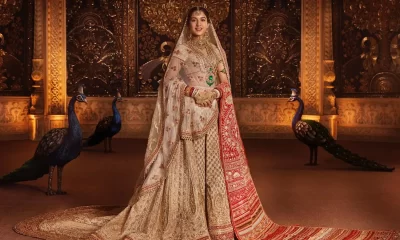
 Style11 months ago
Style11 months agoBridal Guide : Best Looks of Radhika Merchant Ambani
-
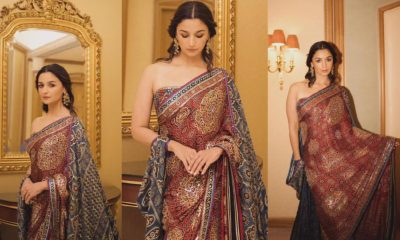
 Fashion1 year ago
Fashion1 year agoMost Discussed Ajrakh Saree of Alia Bhatt
-

 Entertainment1 year ago
Entertainment1 year agoThe Most Stylish Guests of Bhagya Suresh Reception
-

 Entertainment1 year ago
Entertainment1 year agoBridal Bliss : All Bridal Looks of Swasika Vijay
-
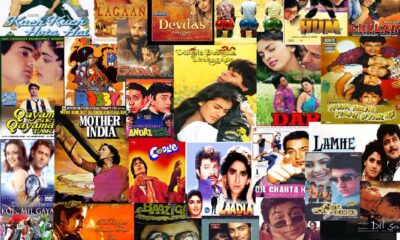
 Movies1 year ago
Movies1 year agoA Nostalgic Journey Through Love &Cinema : Best Bollywood Romantic 90s Movies
-

 AD8 months ago
AD8 months agoPopular Curtain Fabrics to Consider for Your Home
-

 Fashion1 year ago
Fashion1 year agoMajor Denim Trends You Need To Know in 2024
-
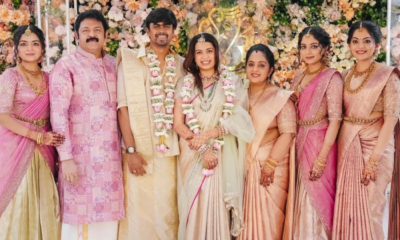
 Events9 months ago
Events9 months agoBest of Fashion Looks : Diya Krishna Wedding




